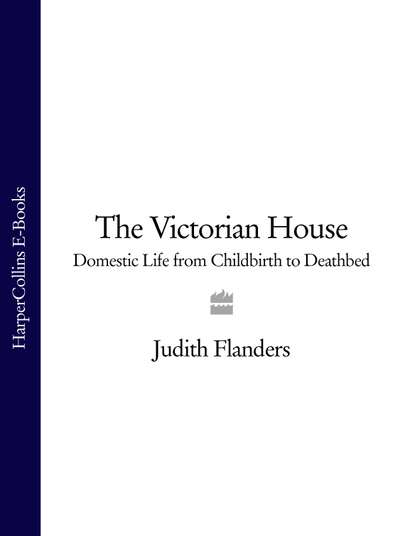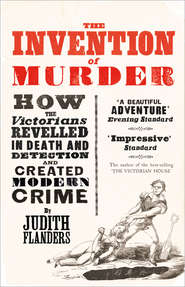По всем вопросам обращайтесь на: info@litportal.ru
(©) 2003-2025.
✖
The Victorian House: Domestic Life from Childbirth to Deathbed
Настройки чтения
Размер шрифта
Высота строк
Поля
(#litres_trial_promo) Charles Dickens’s portrait of Gradgrind, with his love of Facts, was not only a comic fiction: literature both high and low reflected this idea of education as chunks of information. Charlotte M. Yonge gave a vivid picture in The Daisy Chain (1856). There the children had a visiting French master who knew the language well and could tell Ethel, the clever child, when she had gone wrong, but he could not explain why. Ethel
did not like to … have no security against future errors; while he thought her a troublesome pupil, and was put out by her questions … Miss Winter [the governess] … summoned her to an examination such as the governess was very fond of and often practised. Ethel thought it useless … It was of this kind: –
What is the date of the invention of paper?
What is the latitude and longitude of Otaheite?
What are the component parts of brass?
Whence is cochineal imported?
(#litres_trial_promo)
Elizabeth Barrett Browning’s Aurora Leigh (1857) spoke the same language as Miss Winter:
I learnt a little algebra, a little
Of the mathematics, – brushed with extreme flounce
The circle of the sciences …
I learnt the royal genealogies
Of Oviedo, the internal laws
Of the Burmese empire, – by how many feet
Mount Chimaborazo outsoars Teneriffe.
What navigable river joins itself
To Lara, and what census of the year five
Was taken at Klagenfurt, – because she liked
A general insight into useful facts.
(#litres_trial_promo)
The Daisy Chain and Aurora Leigh both appeared in the mid-1850s. Many girls were still being taught the same things in the same way at the end of the century. Eleanor Farjeon, the children’s writer, remembered her schoolroom days in the 1890s:
Miss Milton taught us Spelling … and the Capitals of Europe, and Tables, and Dates. There was no magic in these things as she taught them …
‘What is the date of the Constitutions of Clarendon?’
‘Eleven-hundred-and-sixty-four.’
‘Quite right. You know that now.’
‘Yes, Miss Milton.’
But what exactly did I know, when I knew that? … I didn’t know what ‘Constitutions of Clarendon’ was. Was it to do with somebody’s health? Who was Clarendon? Or perhaps with the way red wine was made … What was Clarendon? Miss Milton never told me, and I never asked.
(#litres_trial_promo)
Eleanor Farjeon did not come from a philistine background: her father was a successful author. His sons went to school, while his daughter was doomed to Miss Milton not because he was unkind, but because, as Louise Creighton said a quarter of a century before, ‘I do not think that such an idea was ever entertained.’
(#litres_trial_promo)
Girls and boys, once past infancy and early childhood, received gender-based conditioning. An advertisement in the back of The Busy Hives All Around Us, a book for children, gave a list of some ‘Popular Illustrated Books’. Their titles are revealing. Girls got The Star of Hope and the Staff of Duty: Tales of Women’s Trials and Victories; Women of Worth; Friendly Hands and Kindly Words: Stories Illustrative of the Law of Kindness, the Power of Perseverance, and the Advantages of Little Helps. Boys got Men Who Have Risen; Noble Tales of Kingly Men; Small Beginnings: or, The Way to Get On.
(#litres_trial_promo) Even more startlingly at variance, since they were by the same author, Louisa Tuthill, were two books called I Will be a Lady: A Book for Girls and Get Money: A Book for Boys.
(#litres_trial_promo) Girls were to read of ‘duty’, ‘trials’, ‘perseverance’, which would make them ‘Women of Worth’. Boys read of ambition, achievement, success – their ‘nobility’ would be in accomplishment, not abnegation.
Boys left home early – they were mostly at school by the age of seven, if school could be afforded. Even a day school ensured that boys spent much of their time with other boys: they became socialized early. The reverse was true of girls: the more prosperous the family, the less likely girls were to leave its shelter. Instead they were encouraged to remain children as long as possible. Boys had their first emotional rupture, their first taste of the outside world, when they went to school, then a bigger rupture if they went to university or when they started work, by which time they were considered adult. Girls who did not need to go out to work had no break to mark their passing from childhood to adolescence: they were often children up until they married. Louise Creighton had barely been out for a walk alone until her marriage in her twenties – if she wanted to go anywhere she had to be accompanied by her governess; if the governess was not available she bribed her young brothers with sweets to go with her.
(#litres_trial_promo) In The Way We Live Now (1875) Trollope notes that ‘The young male bird is supposed to fly away from the paternal nest. But the daughter of a house is compelled to adhere to her father till she shall get a husband.’
(#litres_trial_promo)
Yet women could not be sheltered for ever, although they remained hampered long into adult life by their home-made educations. Gwen Raverat’s mother plagued her family with her dim grip on basic numeracy:
My mother … insisted on keeping accounts down to every halfpenny; but no one, least of all herself, ever understood them … [A]fter my father’s death The Accounts became a constant menace to everyone in the family … It was so hopeless and so useless. It was impossible to add up one page without being dragged into the complications of all the other pages of all the other account books, which were used indiscriminately for everything. The only system was that every item had to be written down somewhere – on any scrap of paper, or any page of any account book; and then, from time to time, everything must be rounded up and added together in one enormous sum. Fortunately no odious deductions were drawn from the resulting total, as quite often the Credits had got mixed up with the Debits, and they had all been added up together.
(#litres_trial_promo)
Fortunately for Mrs Darwin, she had married into a wealthy family, and the accounts were more form than content. For the much larger number of women who needed to work, a similar lack of basic education meant blighted lives. A pamphlet called A Choice of a Business for Girls, published in 1864, warned:
The power of making out a bill with great rapidity and perfect accuracy is also necessary, and this is the point where women usually fail. A poor half-educated girl keeps a customer waiting while she is trying to add up the bill, or perhaps does it wrong, and in either case excites reasonable displeasure. This displeasure is expressed to the master of the establishment, who dismisses the offender and engages a well-educated man in her place. He pays him double wages …
(#litres_trial_promo)
John Ruskin spoke for many of the middle class when he set out his thoughts on the relative educational needs of men and women in his 1865 essay ‘Of Queens’ Gardens’:
[Woman’s] intellect is not for invention or creation, but for sweet ordering, arrangement, and decision … Her great function is Praise … All such knowledge should be given her as may enable her to understand, and even to aid, the work of men: and yet it should be given, not as knowledge, – not as if it were, or could be, for her an object to know; but only to feel, and to judge … Speaking broadly, a man ought to know any language or science he learns, thoroughly – while a woman ought to know the same language, or science, only so far as may enable her to sympathise in her husband’s pleasures, and in those of his best friends.
(#litres_trial_promo)
His ideas were welcomed, and other reasons for the non-education of women were added. George Gissing, in many of his novels an ardent supporter of education for women, in others drew characters whose education encouraged them to move beyond their natural sphere, so that they committed the cardinal sin of not knowing their place, disrupting the ordered segregation of the world. In New Grub Street Dora and Maud, daughters of a vet, have the grave misfortune to attend a Girls’ High School, which gives them ‘an intellectual training wholly incompatible with the material conditions of their life’.
(#litres_trial_promo) Their intellectual station now no longer matches their income, and they therefore remain near-friendless, because their intellectual equals are their economic and social superiors, and they cannot meet on an equal footing.
It was not only the cost of an education that prevented girls from being sent to school. Constance Maynard came from a wealthy family, and her father was happy to spend money on his daughters in other ways, but when she was sixteen he ‘said he didn’t see why he should go on paying for an expensive school when I should do quite well at home with the three sisters above me who had been educated till they were eighteen’ and who could therefore pass along any extra education she needed. When she said she wanted to go to Girton, Cambridge’s newly created women’s college, he ‘offered to get me a new pony if I would give it up.’
(#litres_trial_promo) (She did not, and later became the founder of Westfield College.)
(#ulink_78d7c3e9-a1b4-5759-8867-a68cac473cd4) Schools were, many thought, breeders of disease, places of dubious, if not downright poor, morals, and, as Gwen Raverat noted, just ‘Bad’.








